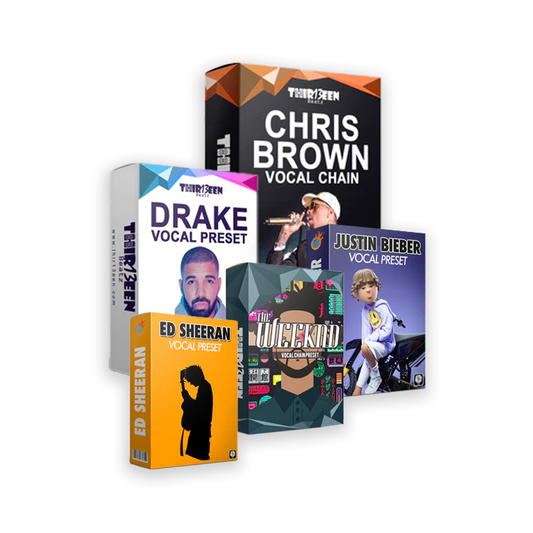The Pultec EQ is renowned for its ability to add warmth and sparkle to vocals without making them sound harsh. Its unique characteristic is the simultaneous cut and boost in the same frequency range, particularly effective on the high end. For adding sparkle to vocals, try boosting around 10 kHz to 12 kHz slightly while cutting in the same range. This technique enhances clarity and presence without introducing sibilance. The Pultec's low-end control can also add richness to vocals, making it versatile for both male and female voices. Experiment with subtle adjustments; the Pultec is beloved for its musicality, adding a smooth, polished sheen to vocals that often makes them sit perfectly in the mix.
Dynamic EQ for Responsive Vocal Mixing
Dynamic EQ combines the precision of an equalizer with the responsiveness of a compressor. It's a game-changer for vocal tracks, automatically adjusting frequencies only when they reach a certain threshold. This means it can tame harsh sibilance in a vocal take without affecting the rest of the performance, offering a more transparent solution than static EQ or compression alone.
Scenarios where dynamic EQ shines include smoothing out uneven tone fluctuations, controlling resonance on certain notes, and balancing the mix without squashing the vocal's natural dynamics. It's particularly useful for live recordings where the vocalist's distance from the microphone varies, ensuring consistency across the performance. Dynamic EQ allows for targeted interventions, making it an invaluable tool in both corrective and creative mixing stages.
EQ Strategies for Background Vocals
EQing background vocals requires a delicate touch to complement the lead without overshadowing it. Start by applying a high-pass filter, similar to the lead vocals, but perhaps a bit higher to avoid low-end muddiness. For blending, gently dip the mid-range frequencies around 250-500 Hz to make space for the lead vocals' body and warmth.
To achieve separation and clarity, subtly boost the high frequencies, around 5kHz to 8kHz, for added air and presence. This helps background vocals sit nicely in the mix without competing with the lead. If the background vocals are too prominent or harsh, consider a narrow cut around 3kHz to soften their presence without losing intelligibility.
The goal is to create a harmonious balance where the background vocals enrich the overall sound, providing depth and support to the lead without detracting from it. Experiment with these frequency ranges and adjust based on the specific characteristics of the vocal recordings and the desired effect in your mix.
Genre-Specific Vocal EQ Tips
For rap vocals, clarity and rhythm are paramount. Begin by applying a high-pass filter around 80-100 Hz to eliminate low-end rumble. Boost slightly around 2kHz to 3kHz to enhance clarity and articulation. A gentle boost around 8kHz to 12kHz can add presence and make the vocals stand out in the mix.
When EQing male vocals in genres like rock or blues, you might want to emphasize the raw energy. Apply a high-pass filter around 60-80 Hz. Boost around 100 Hz to 250 Hz for warmth. Careful boosts around 3kHz can improve clarity, particularly for gritty or powerful vocal performances.
For female vocals in pop or jazz, high-pass filtering at 100 Hz can clean up the mix. A subtle boost around 200 Hz adds warmth without muddiness. Enhance clarity and airiness with a boost around 5kHz to 8kHz. This approach helps female vocals sit prominently in the mix, offering a crystal-clear listening experience.
Remember, these tips serve as starting points. The unique characteristics of the vocal track and the context of the mix will guide your final EQ decisions. Experimentation and careful listening are key to achieving a balanced and compelling vocal sound in any genre.
EQing Vocals in Different Contexts
For podcast vocals, clarity and intelligibility are key. Use a high-pass filter at around 80 Hz to remove low-end rumble. A boost between 100 Hz and 150 Hz adds warmth. Apply a slight boost around 3kHz to 5kHz to enhance clarity and make the speech more engaging.
In music, the approach depends on the mix and genre. A high-pass filter can start around 80 Hz for most vocals. For warmth, gently boost the 150 Hz to 250 Hz range. Boosting around 5kHz enhances presence, making the vocals cut through the mix.
For harsh vocals, identify the problematic frequencies—often between 2kHz and 4kHz. Use a narrow Q to reduce these frequencies subtly. This can soften the harshness without losing clarity.
Nasal tones typically reside around 1kHz. Attenuate this area slightly to reduce nasality. However, be cautious not to remove too much, which could lead to a dull sound.
Each voice and context demands a unique approach. Always trust your ears and adjust settings based on the specific needs of the vocal track and the overall mix.
Vocal EQ Cheat Sheet and Frequency Guide
Creating a vocal EQ cheat sheet helps you quickly enhance vocal tracks. Here's a guide for essential frequency ranges:
-
Sub-Bass (20 Hz to 60 Hz): Usually rolled off, as it rarely contains useful vocal content.
-
Bass (60 Hz to 250 Hz): Careful boosting adds warmth to male vocals. Use sparingly to avoid muddiness.
-
Low-Mids (250 Hz to 500 Hz): Cut to reduce muddiness, especially in boomy or nasally vocals.
-
Mids (500 Hz to 2 kHz): Essential for vocal clarity. Boost or cut depending on vocal presence and mix context.
-
High-Mids (2 kHz to 4 kHz): Adds intelligibility. Boost for clarity, but beware of harshness.
-
Presence (4 kHz to 6 kHz): Enhances vocal presence. A slight boost helps vocals cut through the mix.
-
Brilliance (6 kHz to 20 kHz): Adds airiness and sparkle. Light boosting enhances breathiness and the upper harmonics.
Remember, these are starting points. Vocals vary widely, so adjust based on the unique characteristics of the voice and the mix. Experimentation is key to finding the perfect EQ settings for each vocal track.
Concluding the Vocal EQ Cheat Sheet
Mastering vocal EQ is crucial for achieving pristine mixes that stand out. By understanding how to manipulate frequencies, you can enhance the natural beauty of any vocal performance, ensuring clarity, warmth, and presence. The right EQ settings help vocals sit perfectly in the mix, complementing other elements without overpowering them. Techniques like subtractive EQ, strategic use of high-pass filters, and thoughtful application of additive EQ are essential tools in your mixing arsenal.
Remember, the key to successful vocal EQing lies in careful listening and incremental adjustments. No two voices are the same, which means there's no one-size-fits-all approach. Experimentation, combined with a solid understanding of frequency ranges and their impact on sound, will guide you towards the perfect balance in your mixes. Keep practicing, stay curious, and don't be afraid to break the rules once you've mastered them. Your mixes will thank you for it.









